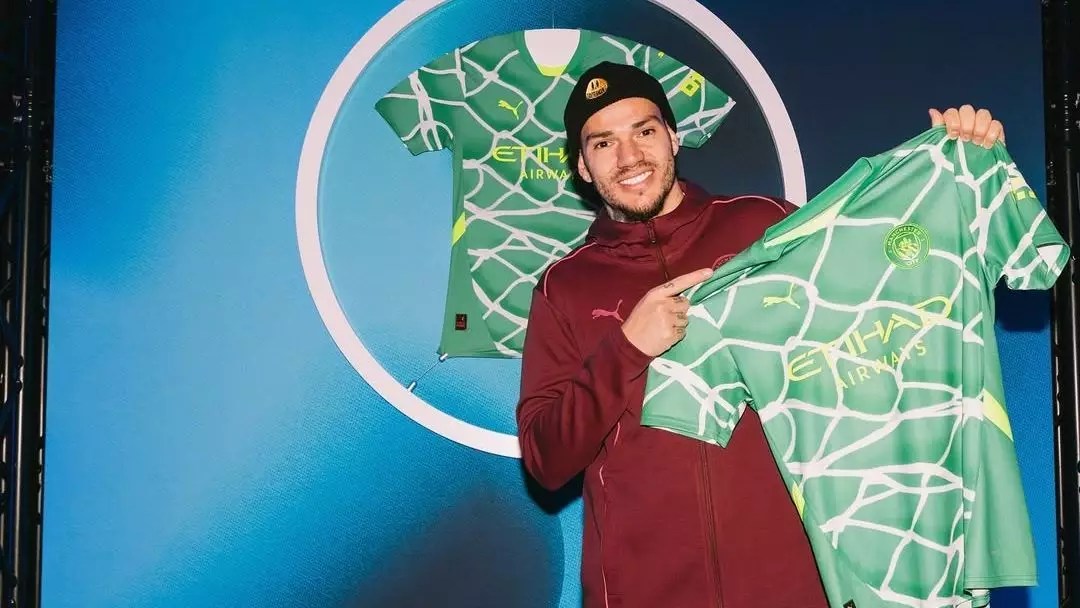Manchester City FC finds itself navigating a precarious moment, grappling with a string of disappointing results that stand in stark contrast to the lofty expectations set during the Pep Guardiola era. As discontent simmers among fans, the club and its kit supplier, Puma, have pivoted towards an engaging initiative to lift spirits and connect with their supporters. The introduction of a text-to-image AI kit design competition, meant to curate the team’s 2026-27 third kit through fan participation, embodies a merging of technology and community engagement that warrants both enthusiasm and scrutiny.
The concept of involving fans in the creative aspect of kit design is not entirely new, yet coupling this with AI technology marks a significant shift. The underlying aim is to strengthen the bond between Manchester City and its supporters while injecting an innovative flair into the design process. However, one cannot ignore the potential pitfalls inherent in this collaboration. Critics may perceive this move less as a celebration of fan creativity and more as a calculated strategy where Puma can utilize fan input without substantial financial commitments.
Bars of skepticism could arise from the recognition that this partnership not only invites fans to generate designs but might also absolve Puma and the club from having to engage professional designers fully. This aspect leads one to question the true motivation behind the initiative: is it genuinely about celebrating fan creativity, or is it a clever marketing ploy underscored by financial interests?
The AI kit generator, developed alongside DeepObjects, aims to allow fans to input their artistic visions and see them transformed into tangible designs. Nevertheless, the technology’s operational limitations raise concerns about its practical applicability. Users have reported challenges in translating specific creative concepts into the software, with some prompts resulting in unintended outputs. For instance, attempts to create kits inspired by specific cultural references have produced results that stray far from the desired effects.
Moreover, while AI technology holds promise, its training methods introduce a layer of complexity. The libraries from which the AI draws inspiration could infringe upon copyrights inadvertently. This concern amplifies when considering that the generated designs are under the jurisdiction of Puma and Manchester City, who retain rights to make modifications. Thus, the question hangs in the air: How will intellectual property laws affect the designs born of this contest, and what inherent value does that hold for participating fans?
The mechanics of the competition offer intriguing pathways for fan interaction. Each participant begins with 15 Design Credits, using these credits to create their designs while gaining additional opportunities through community engagement—specifically, by reviewing other designs. This structure not only incentivizes a sense of community among fans but also encourages active participation in the kit design process. The idea that collaboration could lead to the crowning of a collective design speaks volumes about what modern fan engagement can look like.
However, the competition’s constraints—where each participant is limited to two official entries—invite further analysis. While this limitation ensures quality control, it may inadvertently stifle expansive creativity. The possibility of accumulating more Design Credits raises the question: does it turn the competition into a popularity contest rather than a festival of creativity? Fans might feel pressured to critique widely shared designs merely to circumvent entry limits, potentially diluting the overall experience.
As eager supporters submit their designs, the eventual selection of the winning kit will arise from a combination of expert reviews and public voting. While this approach strives for democratic representation in the design process, it leaves fans wondering about the actual impact of their input. What happens if the fan-selected designs diverge significantly from the club’s branding goals or aesthetic standards? The balance between creativity and brand integrity remains a delicate tightrope walk.
The competition runs until December, with public voting slated for early 2025. As anticipation mounts for the unveiling of the chosen kit, Ivan Dashkov’s assertion that the kit creator enhances the connection between fans and the game they cherish rings true on multiple levels. However, authenticity in fan engagement must transcend mere technological novelty. For meaningful relationships to be cultivated, genuine avenues for collaboration that respect fans’ contributions are essential.
While Manchester City’s AI kit design contest embodies bold strides in merging technology with fan engagement, its success will ultimately depend on how well the club navigates the intricate balance between innovation and tradition. As the competition unfolds, supporters will be watching closely, waiting to see if their creativity will truly shine through in the final design.


Leave a Reply